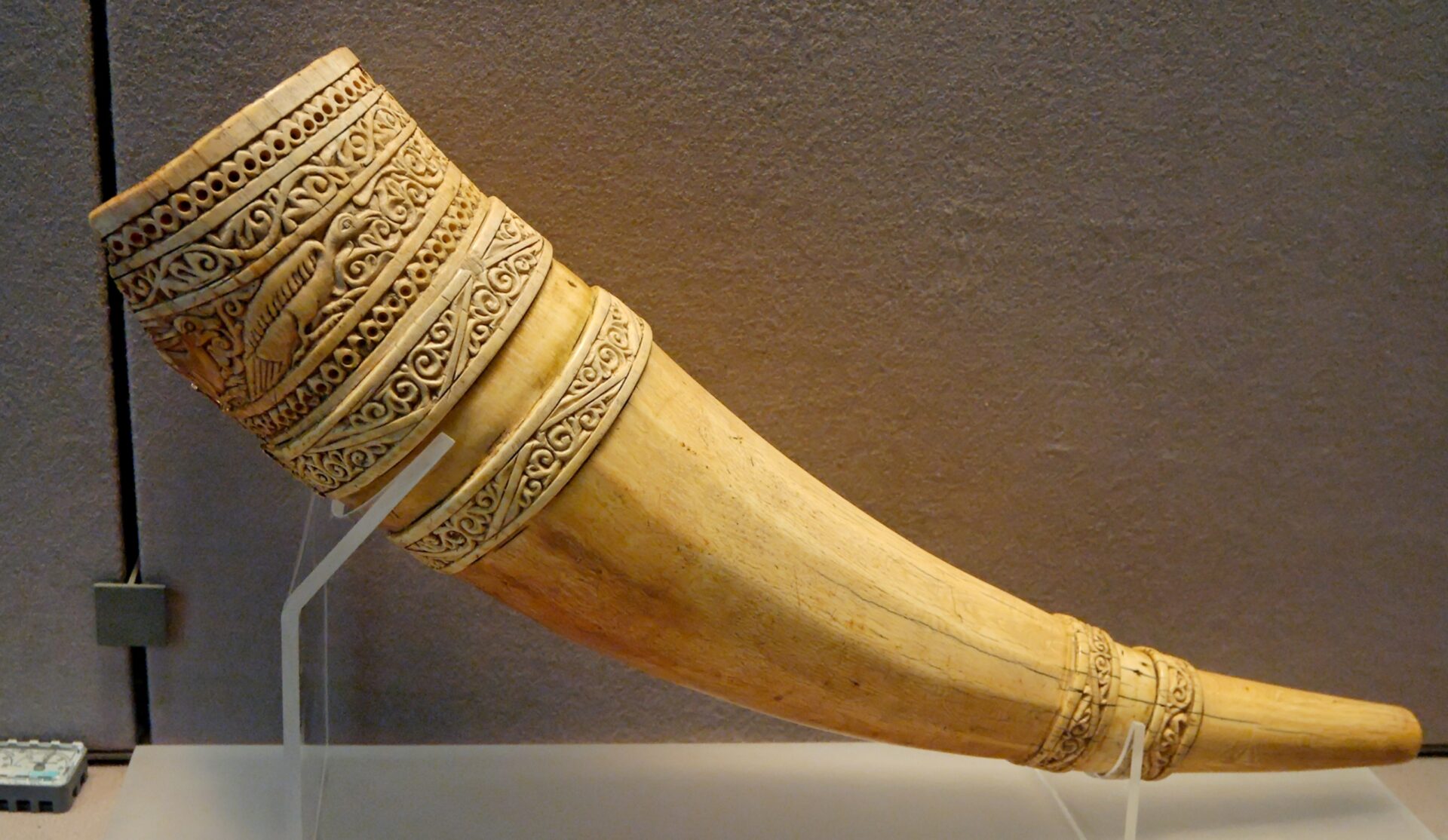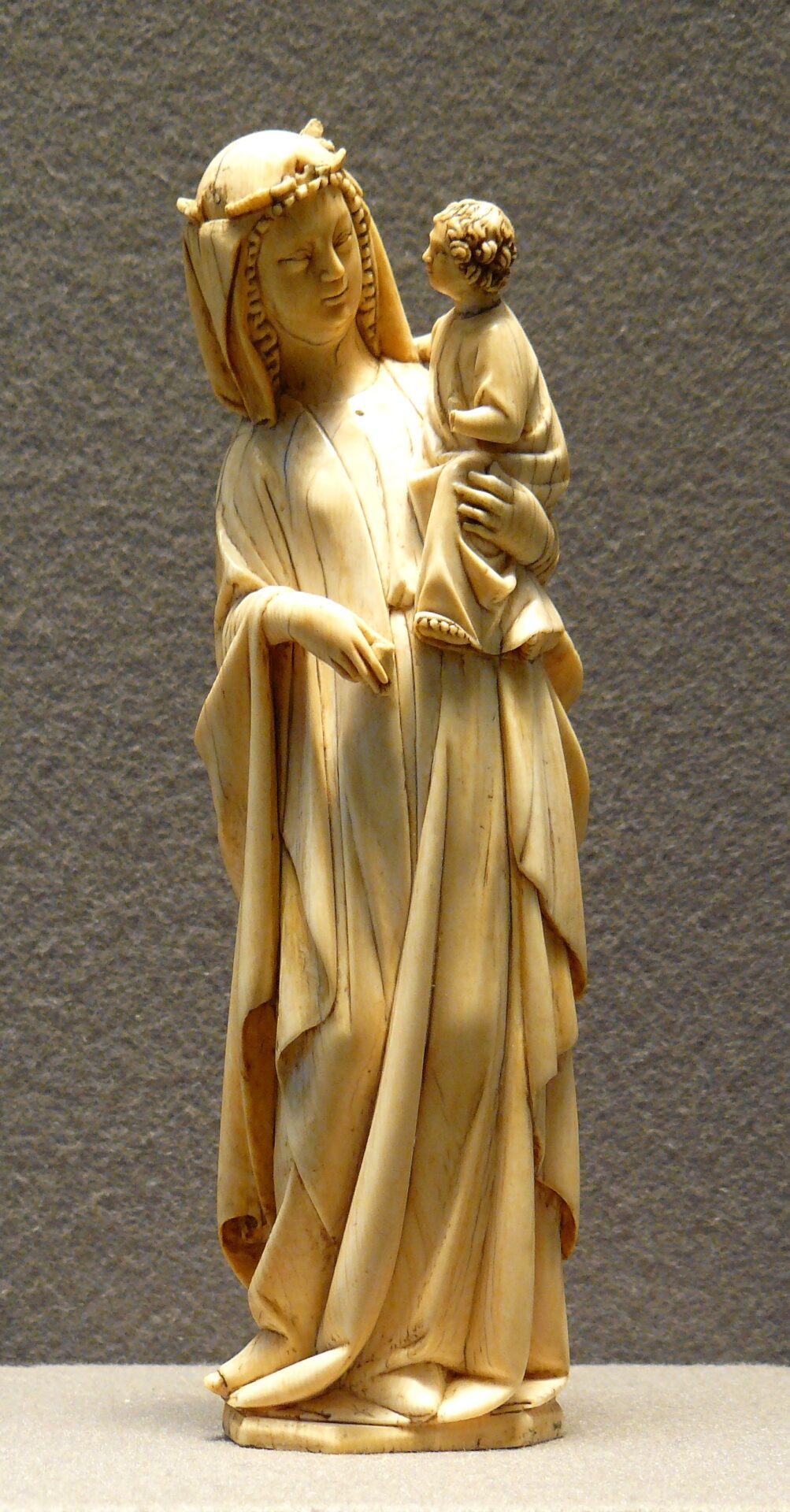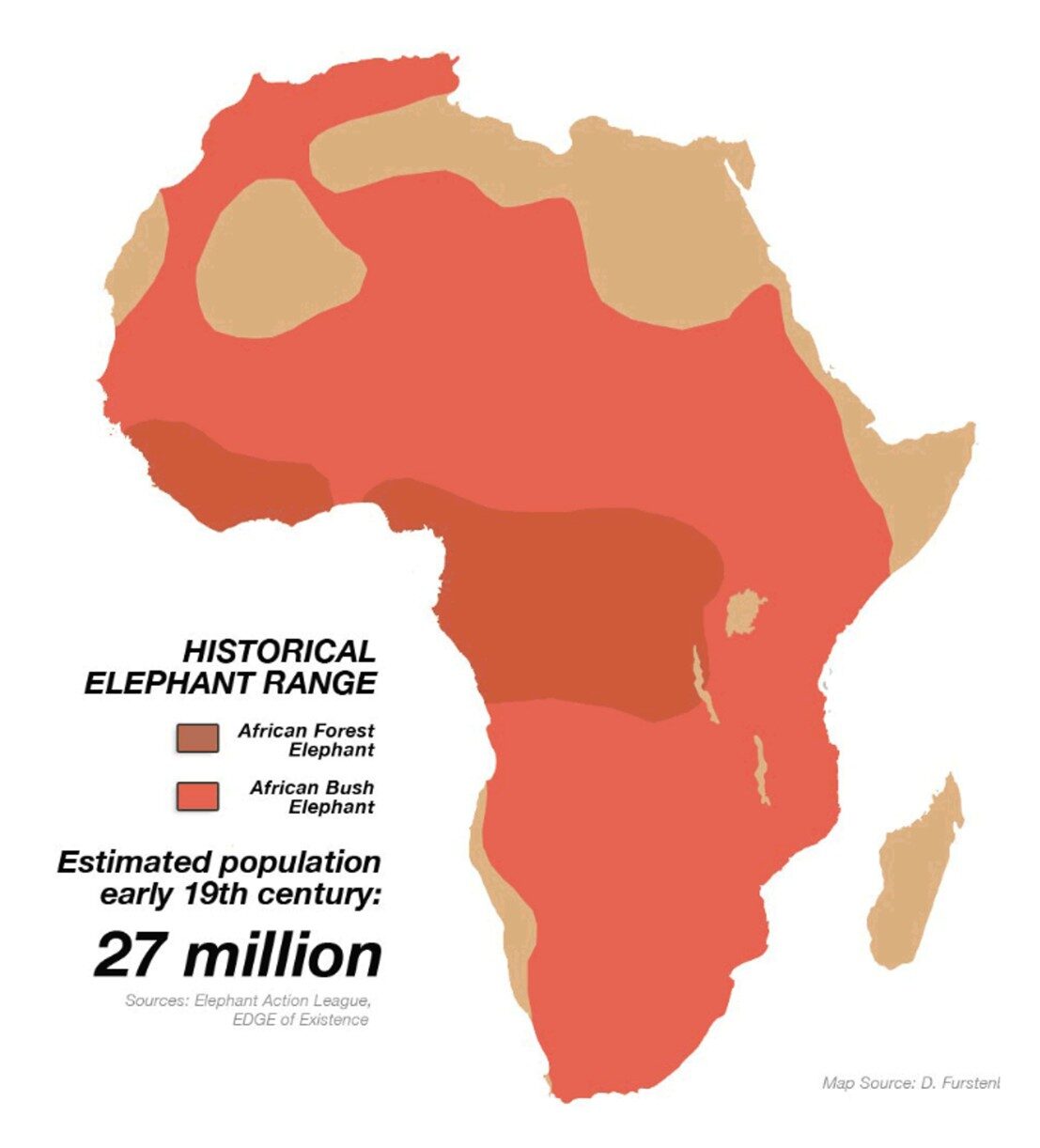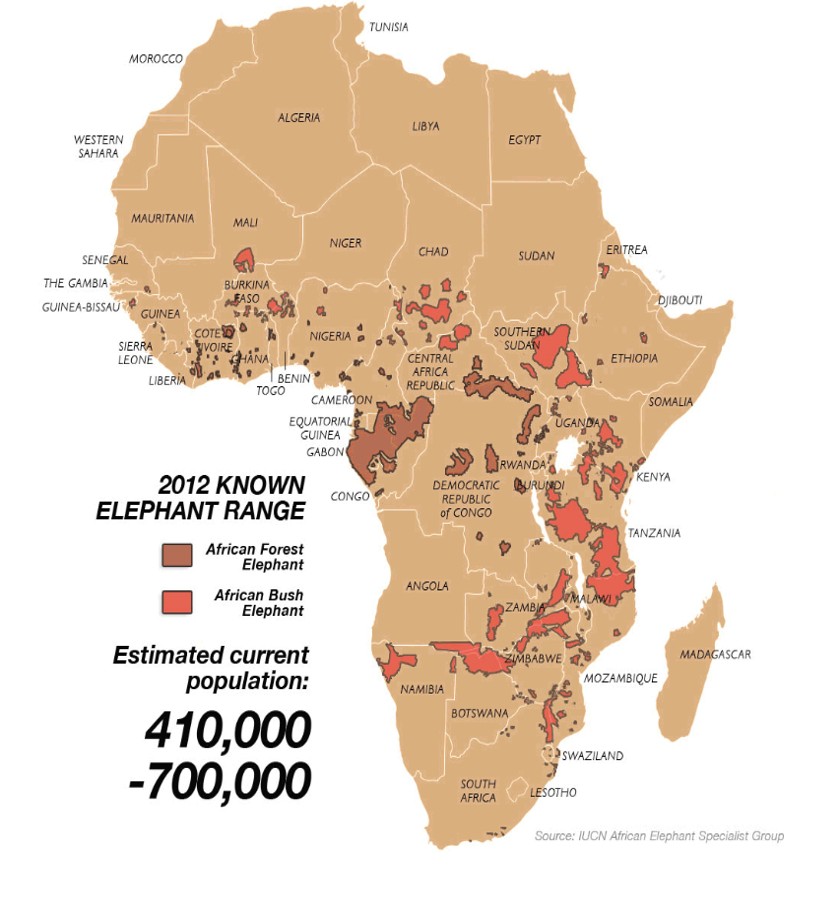SOSPETER KIAMBI
ENCOUNTER WITH TIM, THE ‘SUPER TUSKER’
At the beginning of the 21st Century, there lived a boy called Millennial, his father and grandfather. At the time, Millennial was 10 years old.

11th-century Italian carved elephant tusk, Louvre. Donated by S. Baron, 1898 . Photo Credit: Jastrow
Their house was decorated with a wealthy collection of artifacts, artificial and natural, but mostly natural collection. Outstanding amongst the collection were huge nicely polished hornlike structures. Needless to say, the house was stunning. People from all fronts visited the home and admired the presentation. On noticing the amazement by the visitors, the grandfather would always brag how he and a few of his age-mates in their youth explored the universe and made the diverse collection.
Since the young boy and his father hadn’t travelled beyond their county, the stories by grandpa made them very curios. Out of curiosity Millennial once asked, “Grandpa, are those horns from a big bull or a bison?” The grandpa, almost offended responded, “No idiot, that is invaluable ivory from elephant tusks!” “We tracked the elephants for days and nights in the wilderness, shot them with high caliber rifles to collect the tusks”, he would continue. Grandpa proceeded to inform them how valuable ivory was. To say less, his wedding ring was curved from ivory. In fact, only a fraction in their county could afford an ivory curved ring. It felt prestigious to have one. Whilst the grandfather opted to decorate their home with his collection, some of his age-mates chose to trade the elephant tusks with other far nations. Grandpa had learned how prestigious the tusks were to these far nations too. In those nations, he was informed that in addition to the prestige from artifacts, ivory could be transformed to aphrodisiacs, poison detectors or even spell telling. In fact, according to grandpa’s age-mates, ivory was more valuable in the far nations than back home. Business was booming. Even though the grandfather never created an environment for dialog, Millennial was always eager to his stories. Many questions lingered in the young boy’s mind. His father, would not be of any help as both had not been beyond their county.
With the rhetoric attitude by grandpa, Millennial always refrained from further engagement, but his father could always read the questions on his face. The father always tried to explain to Millennial what elephants were and that they lived in the wilderness where nobody lived. No matter the efforts by the father, Millennial’s curiosity soon grew into anxiety. The father had to eventually organize for a trip to the wilderness for Millennial and himself to see the elephants for the first time. At this time, the grandfather was too old to travel.

Ivory statuette known as "Virgin and Child standing" (height approximately 25 cm) - Paris, end of the 13th century. Louvre Museum, Inv. OA 9490A
The journey was long. It took them days to cross the lands and the oceans but finally they were there, into the wilderness, into the jungle. To their amusement, the jungle was full of life. Undulating landscapes, wildlife and people. The social interaction and the level of interdependence between the different wildlife species and between the wildlife and people was amazing. The boy exclaimed, “From the narrations by grandpa, I did not expect to meet people in the wilderness.” Both were ecstatic. They soon learned they were in Africa. Besides the native people, they also met many other visitors who had travelled to experience the beauty of nature. There was a multifold of visitors from across the world. Much more than had visited their home. Some of the visitors were interested on the scenic beauty, others the birds, while others on the plain game. The boy and his father were eager to see elephants and true to their wish, they met many elephants. The elephants lived in family groups just like humans. They were majestic and very helpful to the other species. They could shake trees to fell ripe fruits for other animals to feast. They dug out root tubers and small wells in dry river beds for young elephants and other wildlife to quench. Moreover, since elephants travel long distances, they dispersed the fruit tree seeds to other localities in their poo. To sum it all, due to their high level of intelligence, elephants were extremely entertaining to the visitors. In one family, was a gigantic bull called Tim and his son Mat. Tim was born in the mid-20th Century. He had huge tusks. Tim and a few other elephants with big tusks were locally referred to as ‘super tuskers’. Tim learned the curiosity in Millennial. He (Tim) would present his family every morning when Millennial and his father went for game viewing. Quickly, there grew a strong bond between Tim and the young boy.
The bond grew stronger by the day. The two would seat for long ours in the evening as Tim told stories of the wilderness. Tim informed Millennial of his childhood. Narrating his childhood, Tim said, “When I was young, there were many elephants, more than fourfold today”, Tim continued to inform Millennial that many were killed by brutal visitors for their tusks. Many members of his family had been killed. Regardless of his gigantic posture, Tim wept uncontrollably on remembrance of the brutal days. Millennial wondered that elephants too had emotions! Tim further disclosed that survivors would bury the dead and vacate the massacre sites to try clear the brutal memories. Tim wondered of what use the brutal visitors had with their tusks, and not take all the bones. To him the tusks were for defending the family, shaking trees for fruits, digging root tubers and so on. Millennial acknowledged the tusks were more useful on the elephant. In his mind the young boy recollected the stories from his grandfather. His grandpa and mates were the brutal visitors Tim was telling about! They were mean! He could not believe it. Although the stay in Africa was pleasurable, the boy could not wait to return home. He was angry with the grandfather. The tusks were more valuable on elephants than as decoration in their house. He wanted to correct grandpa. In the remaining days of their visit, Tim and his son Mat kept the boy company all nights sharing stories and experiences. They even disclosed to the boy that only a few super tuskers lived and that occasionally, the brutal visitors would come back. In recent times, some of the brutal visitors were the local people.

Soon the boy and his father travelled back home. The journey and the new knowledge made the boy have mixed feelings. He was happy, sad and angry at the same time. He was angry at the grandfather for deceiving him, and to his father for allowing the deception to happen. All along the journey, his father observed him speechlessly. They arrived home only to meet the grandpa had passed on due to age related complications. This did not vary Millennial’s thoughts about ivory. It was worthless. In fact, he grew determined to change the narrative. He became a great academician. He conducted extensive research on nature, wildlife and specifically elephants. One of his many monumental discoveries was that elephant ivory was made of a protein, keratin, just like human hair or nails. If human nails or hair could be transformed into an aphrodisiac, so would elephant tusks! All was a hoax! It was a stupid manipulation by greedy businessmen out to amass wealth at the detriment of elephants. Millennial, now a middle aged man had all the scientific evidence concurring with his belief that ivory is worthy more on elephants. He extensively presented his findings to his peers. Globally, all his peers agreed with his results. In fact, they all wondered how colloquial one would be to believe that elephant tusks could be used to spell tell, or as an aphrodisiac for that matter. His peers acknowledged his work in applaud. He received many awards globally. Even though he had not been to Africa, or heard from his friend Tim for a while, he was convinced that from his extensive studies and global recognition, poaching had seized. Inherently, he was delighted with his contribution against poaching. At this time, the young man had a fiancée. They loved each other very much. The young man pondered of a best engagement gift. Though aged, his father always read his son’s emotions. He knew the boy was struggling with selection. “Cough, cough, why not Africa? How is your friend Tim?” the father murmured. And wow! a ‘safari’ to visit his friend Tim would for sure be a best gift to his fiancée.
Cylindrical Ivory Casket, Siculo-Arabic, Late 12th or early 13th century. Hunt Museum, Limerick, Ireland.

The young man planned a trip to visit and present his fiancée to Tim and his family. He was anxious to meet Tim. At this era, the transport infrastructure had greatly improved compared to his initial trip. They took a flight, and in a few hours, they were back to the wilderness. In their game drives, they met many species but with just a number of elephants. Millennial inquired extensively of his friend Tim, and any other of the super tuskers. After days of unfruitful searching and inquiry the young man and his fiancée encountered an elephant family. This family was not as welcoming as he had experienced previously. In fact, the elephants were hostile and confrontational, almost dangerous. The elephants were angry. They attacked the visitors! Millennial could not understand what had changed. His fiancée was frightened! Just before trampling the visitors, a young elephant bull stopped the others. He had recognized the young man. The young man was his father’s friend. It was Mat. On inquiry, Mat, the young bull explained to Millennial and the other visitors that the family was moaning the death of their relatives. Tim was among the elephants that had been killed. Mat took the young man and his fiancée to the grave site. It was pathetic. Many elephants, including young had been killed and their tusks removed. Only Mat and a few family members survived the massacre. The fiancée could not stand the stench. She cried and asked Millennial to take her back home. She wished she had never gone to the wilderness.
Their flight back home was gloomy and silent. The two talked, just a little. The young man wondered how there still could be poaching, considering his extensive research and the global recognition. To him, it was now basic knowledge that elephant ivory is worthless. Even his peers agreed. To this, the fiancée retorted “But the poachers aren’t your peers!” It is with this that the young man came to the realization that he had only been interacting and presenting to fellow scientists. Millennial was distressed but to save the few remnant elephant populations, he could not despair. He had to do something. He swore to extend his campaigns especially to the less informed consumers of elephant ivory, with a simple message; Ivory is worthless and it belongs to elephant.
Sospeter Kiambi is a Senior Research Scientist at Wildlife Research and Training Institute. He has over 17 years of working experience in wildlife research. He is presently stationed at the department of populations and habitat dynamics based at the Institute’s headquarters in Naivasha. Sospeter obtained a degree in Wildlife Conservation and Management from the University of Nairobi and MSc in Conservation and International Wildlife Trade from the University of Kent in the United Kingdom, and is currently enrolled for a PhD at the Durrell Institute of Conservation and Ecology (DICE) in the same university. His research aims to investigate the ‘Human-elephant co-existence in a post-ivory ban landscape.’ https://research.kent.ac.uk/gcdc/person/sospeter-mwirigi-kiambi/ Amongst many other courses, Sospeter is a trained and registered Environmental Impact Assessment and Audit expert with the National Environmental Management Authority (NEMA) of Kenya and a trained trainer on Monitoring the Illegal Killing of Elephants (MIKE) and the black rhino monitoring using the IUCN African Rhino Specialist Group (AfRSG) monitoring guidelines. He is skillful in biodiversity management, ecology, geospatial and statistical analysis.
